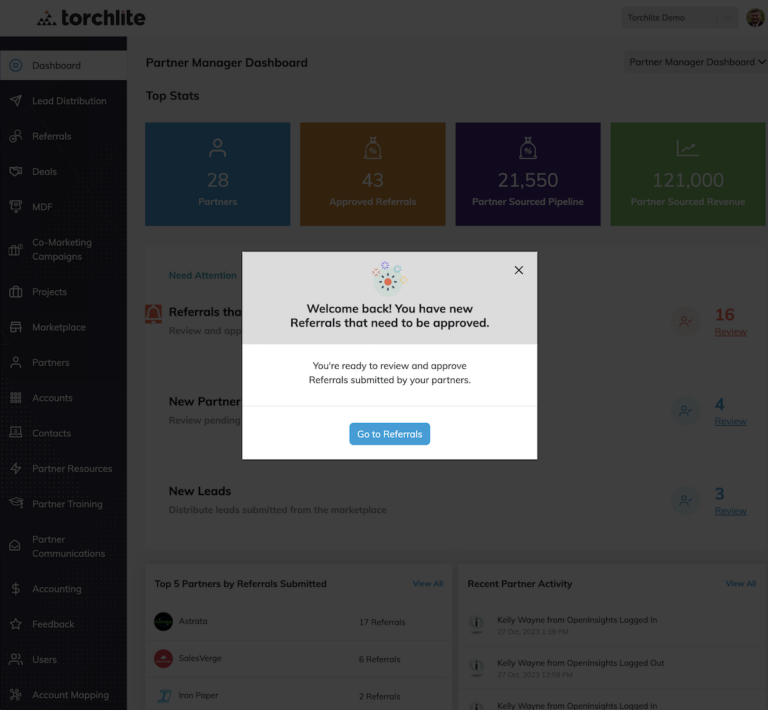What Does PRM Mean in Sales?
For sales teams, proper partner management can be the difference that closes a sale—especially in the B2B space. The ability to showcase your brand’s image through successful partnerships is invaluable when selling another business on working with you. But even when speaking with customers, sharing information about your partners or affiliates can make your business look more reputable, successful, or attractive as a whole.
Partner relationship management (PRM) is a role that, when done well, serves many other adjacent business functions. You can see the positive effects of a business’s PRM in marketing, operations, project management, and of course, sales. Read on to learn more about PRM’s meaning for your business and how you can use the partner management framework to your advantage as a salesperson.
What Are the Objectives of Partner Relationship Management?
Partner relationship management (PRM) aims to monitor, facilitate, and report on a business’s partnerships. PRM is a delicate balance between relationship management, project management, and data analysis that must mold to fit each unique partnership’s goals and objectives. Since every business relationship is unique, partner management requires a strategy for not just the entire portfolio, but each individual relationship. As such, developing a guiding list of partner relationship management best practices is crucial to staying organized and efficient.
When a business manages partnerships well, a whole host of other departments benefit, including sales. Part of the reason this is so important to sales specifically is because of the increasing challenges salespeople face in both inbound and outbound marketing. Consumers are seeing more ads now than ever before—upward of 10,000 a day—which makes establishing meaningful or productive client relationships even more difficult. Partner programs such as affiliates and co-marketers help businesses convert more often, and there is a large amount of data to back that up. Here are just a couple of examples:
- Forrester Research found that companies can generate up to 28% of their revenue through partner channels alone.
- Gartner found that companies with partner marketing programs see a 24% increase in deal size compared to companies with no partner marketing.
It’s clear that PRM is a valuable asset to sales and marketing teams. However, executing PRM well is not a simple task; it requires the right infrastructure—and the right tools—to benefit a business.
Does PRM Follow Different Principles Than CRM?
In short, yes—because it has to. While both PRM and CRM focus on improving relationships, PRM approaches relationship building from a B2B partner perspective, whereas CRM is a B2B or B2C Client-focused function. Building partner relationships requires a different approach because business relationships can take on a variety of forms, all of which have varied goals. Similar to ideal customer avatars for CRM, partner programs have some common archetypes. Below are a few examples:
- Reseller | Manufacturers often partner with companies who can sell the manufacturers’ products on their behalf; this is what’s known as a reseller partnership. Resellers buy goods from manufacturers at the base (wholesale) rates then sell them at a marked up (retail) rate for profit.
- Distribution | Smaller companies will often work with larger companies to expand their reach, typically in exchange for exclusivity. Distributors give companies increased market share and often help with logistics, inventory management, and other operational tasks that demand large amounts of resources. In exchange, distributors get to associate themselves with a quality product or service that only they can provide, thanks to their partnership.
- Co-Marketing | Some businesses form partnerships to promote each other’s products to their respective customer bases, growing each company’s market share. This is particularly common between companies whose products are complementary—for example, a coffee grower and a Thermos manufacturer.
- Referral / Affiliate | Some businesses form partnerships to promote each other’s products to their respective customer bases, and typically get a referral fee in return. This is particularly common between companies whose Customers or targets in side the business are similar but they don’t really compete for the same budget and they are willing to share that lead with a partner.
In all of the above frameworks, sales and marketing both play a huge role in the partnership’s success. Similarly, if these partnership archetypes are successful, they will generate new leads and hopefully, new conversions as well.

What Is PRM Software?
PRM software is a digital tool that automates, consolidates, and simplifies much of the partner management process. The best software solutions bring together all the components of PRM, including communication channels, progress tracking, financial data, resource sharing, and far more.
The core capabilities of PRM software are as follows:
- Partner onboarding and training
- Partner communication and resource sharing
- Account management
- Account mapping with intent data overlap
- Mutual visibility for partners and internal teams
- Financial attribution of partnership success
Each of these components makes PRM a better asset for sales teams as well. If a salesperson can quickly reference key data from their business’s partnerships, such as financial success or conversion rates, it’s far easier to close a deal on new clients. But many salespeople struggle to do such agile referencing because their business lacks the technology to make that happen. For example, if an organization tracks its partnerships through several disjointed tools—such as email, spreadsheets, and file sharing drives—it’s nearly impossible for a salesperson to comb through all of that information and find what they need—and it’s likely not possible at all to do on the fly. That’s what makes PRM software so important for a sales team.
Regardless of what kind of partnerships you’re seeking as a business, you’ll need a software solution that can not only simply PRM functions but adapt to each individual partnership as well. That’s what we provide at Torchlite. Our solution’s design is not just efficient, but malleable: you’re able to control the workflow of each individual partner channel and craft your portfolio in a way that suits your business’s infrastructure. This adaptability even applies to our software’s integration capabilities, as it can communicate with a wide array of softwares, including CRM platforms.
If you’re ready to see how PRM done well can boost your conversion rates, book a demo with us today and see for yourself the power of our software.






